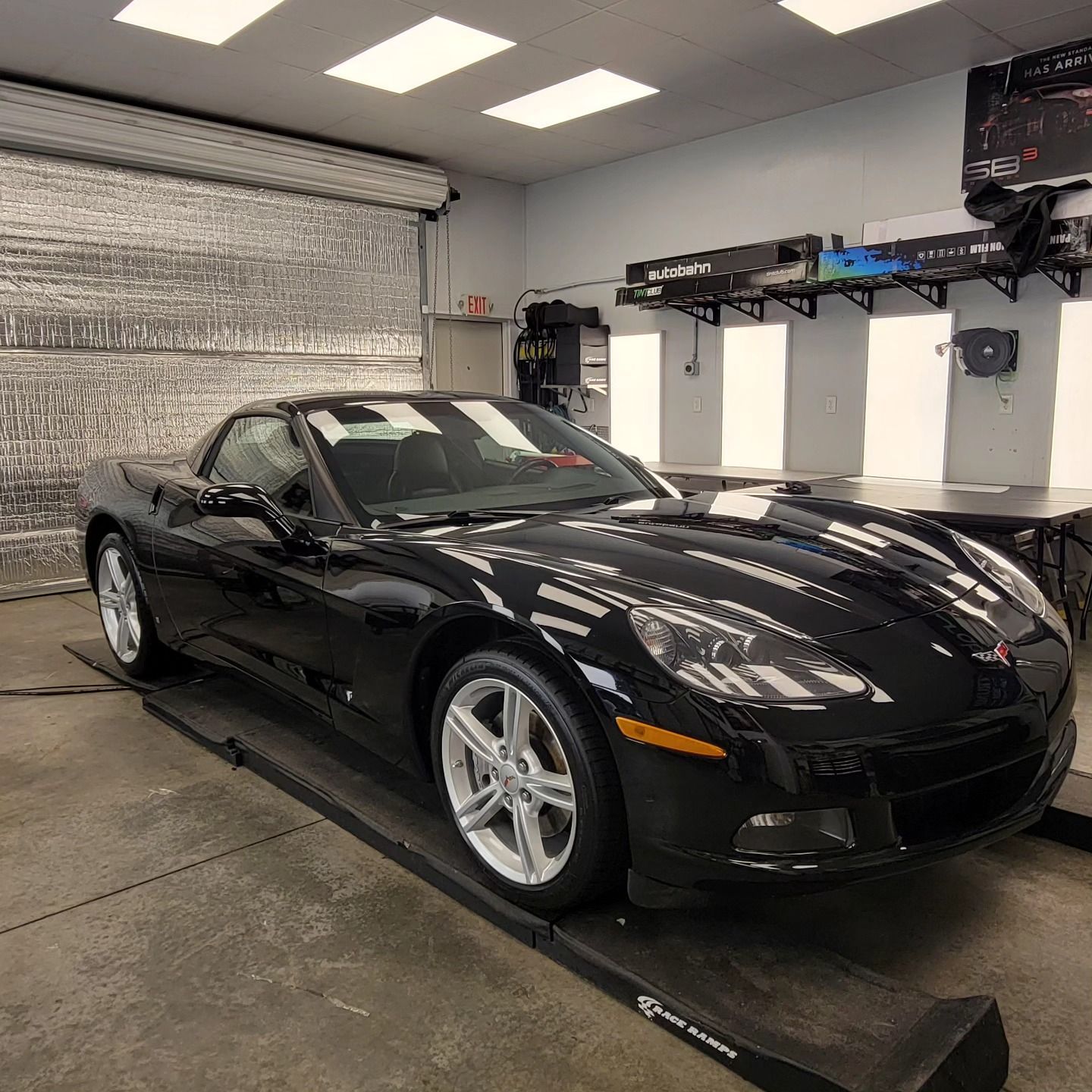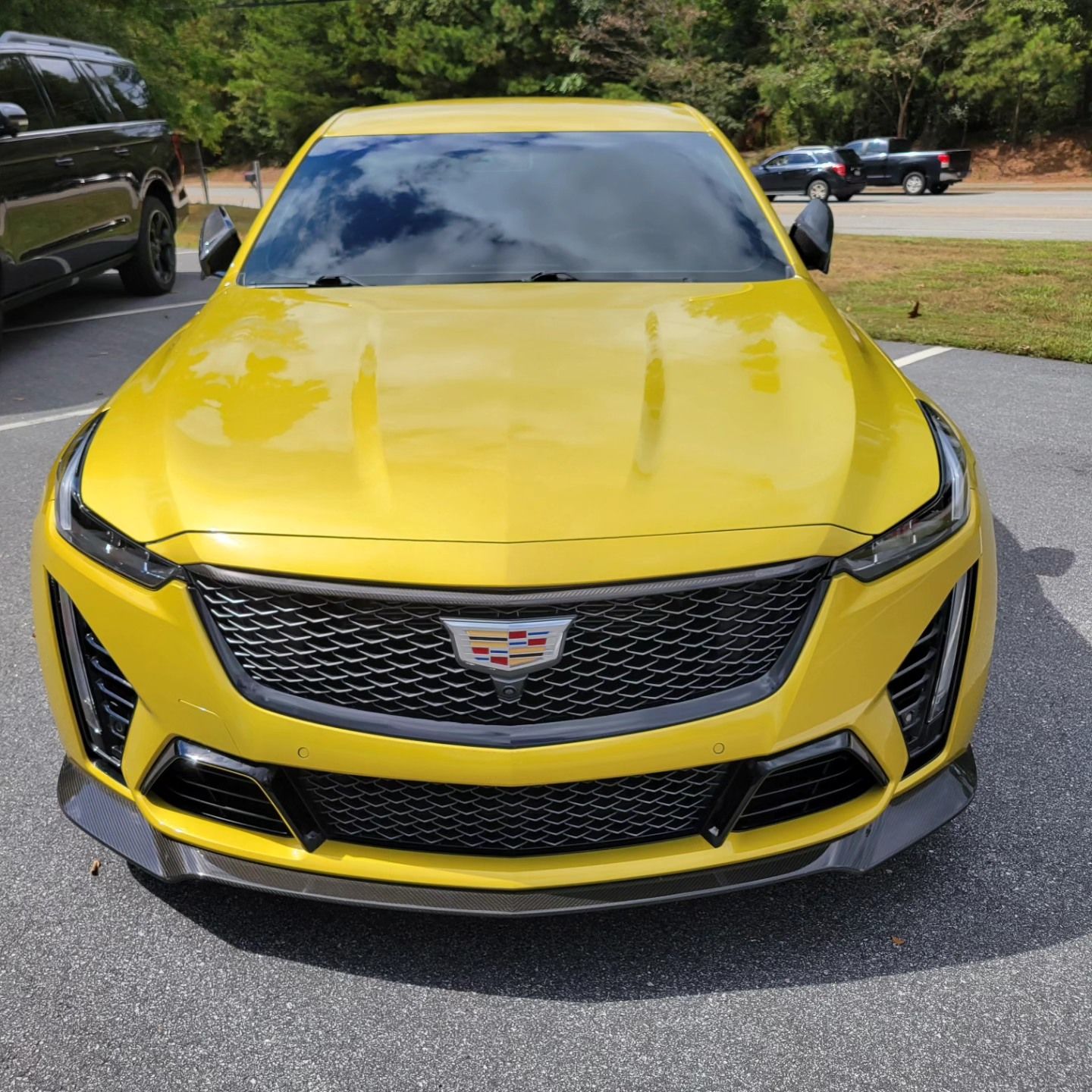Installing paint protection film is a meticulous task that requires precision. It's much like applying a phone screen protector, but on a much larger scale and with more at stake—the aesthetics and longevity of your car's paint job. Careful preparation is key: poorly laid film can lead to issues like air bubbles, wrinkles, or imperfections impacting its protective properties. Also, while it's possible for amateurs to tackle this, seasoned professionals carry an edge with their expertise in handling different types of films.
Unveiling the Paint Protection Film (PPF) Installation Process
Installing paint protection film (PPF) is a meticulous art that effectively safeguards your vehicle's paint. Rushing through this process is not an option. The goal is to apply the film smoothly and seamlessly, without any air bubbles or imperfections that might compromise its protective abilities over time. Both DIY enthusiasts and those considering professional installation should be familiar with this detailed process.
Surface Preparation
The first step in the installation process involves ensuring that the vehicle's surface is immaculately clean and free from any impurities. Any dust, dirt, or contaminants can affect how well the PPF adheres to the vehicle's surface, underscoring the importance of a pristine starting point.
Film Application
Applying the PPF entails laying down the film onto the cleaned surface while ensuring it fits snugly and without creases or wrinkles. A soap solution aids in positioning the film correctly, allowing for adjustments before it sets in place.
Trimming and stretching
After positioning the film on the vehicle's surface, gently stretch it to conform to the car's curves and contours. After this, any excess film may need trimming to ensure a precise fit.
Understanding these steps and their complexities is critical because one small mistake during installation can lead to significant issues later on. Air bubbles or wrinkles not only look unsightly but also compromise the overall effectiveness of the protective film.
Essential preparations and installation tools
Proper preparation is crucial for achieving a flawless PPF installation. Before diving into the application process, it's essential to ensure that the vehicle's surface is clean. Any trace of dirt, grease, or wax can hinder the adherence of the PPF, resulting in imperfections in the final result. Therefore, take the time to thoroughly wash and dry the vehicle to create a pristine canvas for the protective film.
Moreover, it’s equally important to create an environment conducive to meticulous workmanship. A dust-free and well-ventilated workspace will significantly contribute to the success of the installation.
Tools Required
Now that we've covered the groundwork, let's discuss the indispensable tools necessary for a seamless PPF application.
- A heat gun is essential for conforming the PPF around complex curves and edges.
- A squeegee is vital for pushing out air bubbles and ensuring a smooth, flat application of the PPF onto the vehicle's surface.
- A spray bottle with a soap solution helps to precisely position and reposition the film as needed. This helps to prevent misalignment during application.
- A sharp utility knife comes into play during trimming. Trimming excess film requires precision to achieve clean edges and a seamless finish.
With these requisite tools at your disposal and preparations properly carried out, you're all set for a successful PPF application. Now let's delve into executing this protective film installation to ensure your vehicle stays looking new for years to come.
Executing the 4-Step Paint Protection Film Installation
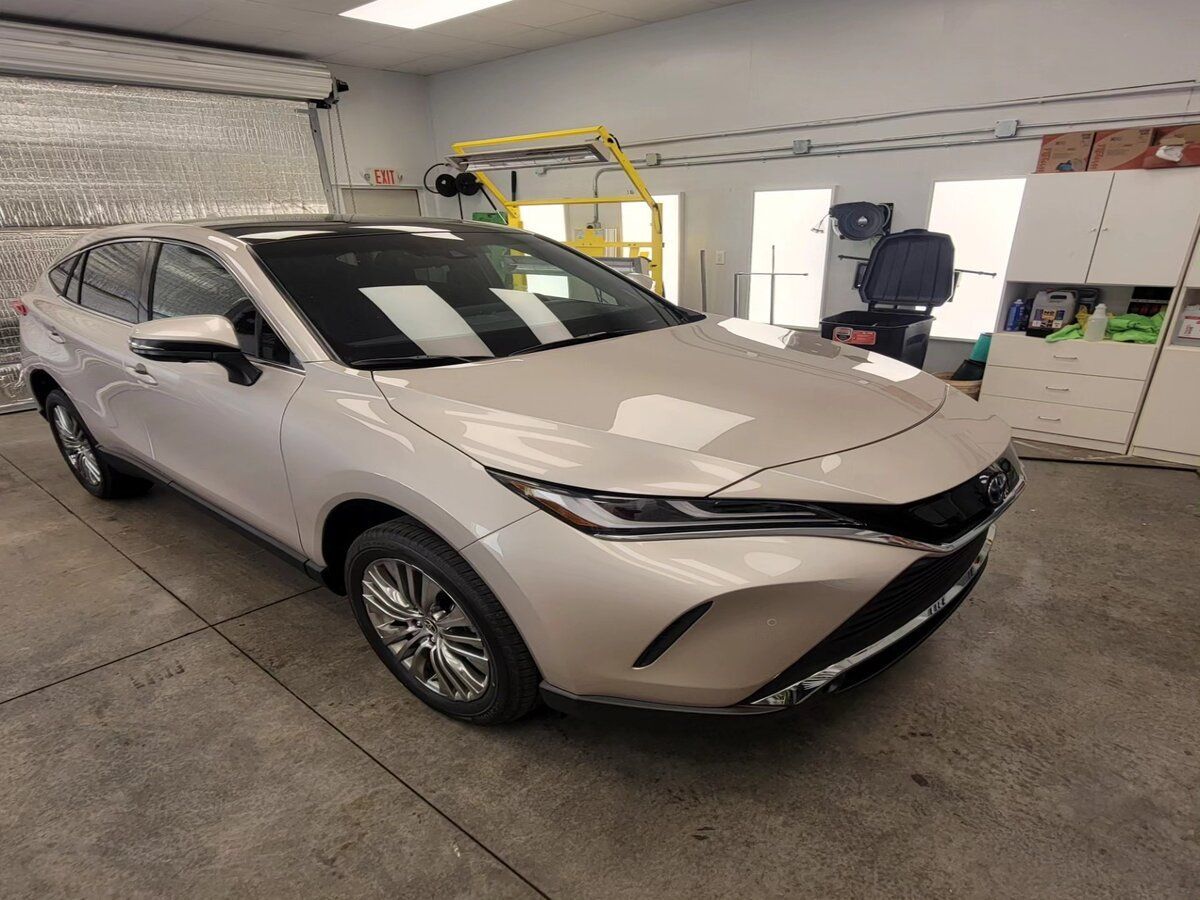
Now, it's time to start applying the paint protection film (PPF) to your vehicle. This will help safeguard your car's integrity and maintain its sleek appearance.
Step 1: Preparing the Surface
Make sure to meticulously clean the vehicle's surface before you begin. To avoid bubbles or bumps beneath the film, it's critical to remove any dust, dirt, or imperfections on the surface. Pay particular attention to cleaning around edges and seams where dirt and debris usually accumulate. A thorough cleaning process is crucial to ensuring a flawless finish.
- Cleaning the surface involves thoroughly washing it with soap and water, followed by using a clay bar to remove any embedded contaminants. Finally, wipe down the surface with isopropyl alcohol to eliminate any remaining residues. Following these steps diligently sets the stage for a successful PPF application.
Step 2: Applying the film
After achieving a squeaky-clean surface, it's time to apply the film. A soap solution helps create a slippery surface for easy positioning as you lay down the adhesive side of the PPF.
- There are two installation techniques: precut and bulk. Pre-cut pieces precisely fit specific areas of your vehicle, ensuring accurate coverage without any excess material. Bulk films, on the other hand, undergo trimming and shaping during installation, providing greater flexibility in adjusting coverage for areas with unique shapes. Both methods require precision and patience.
Step 3: Smoothing and stretching
As you lay down the film, it's crucial to gently stretch it to fit the curves of your vehicle's bodywork. Using a squeegee is essential to eliminate air pockets and creases that could compromise the protective seal.
- To ensure an optimal finish, work slowly and methodically—stretches should be gentle yet firm enough to eliminate any slack or tension in the film
Step 4: Trimming Excess Film
Trimming any excess film is critical for achieving a seamless finish. If you opted for bulk installation, carefully trim away any surplus material along edges and contours to ensure an immaculate fit.
- During this step, use an razor blade carefully, trimming away small amounts at a time to avoid cutting into the vehicle's paintwork.
By meticulously following these steps, you can ensure that your paint protection film installation is not only effective in safeguarding your vehicle but also aesthetically pleasing, keeping your prized possession looking its best for years to come.
Exploring Different Types of Film
When it comes to choosing the right paint protection film (PPF) for your vehicle, there are a few options to consider. Each type of PPF comes with its own set of features and benefits, providing varying levels of protection and performance. Let's take a closer look at these different types to help you make an informed decision about which one suits your needs best.
Standard polyurethane film
Standard polyurethane PPF is the most basic type of film available, offering a good level of protection against scratches, chips, and environmental damage. It acts as a barrier between the vehicle's paint and external elements, helping to maintain the overall appearance of the car. While standard polyurethane film provides solid protection, it doesn't have the advanced features found in more modern PPF options.
Self-Healing Film
Self-healing PPF takes protection to a whole new level. This advanced film has the remarkable ability to repair itself when subjected to light scratches or swirl marks. The material has "shape memory," enabling it to revert to its original form when heated, effectively eliminating minor blemishes without any intervention. This feature ensures that your vehicle always looks pristine and well-maintained, even after minor everyday wear and tear.
Hydrophobic Film
Hydrophobic PPF goes beyond traditional protective functions by incorporating water-repelling properties. This means that water beads up and rolls off the surface, preventing moisture from settling on the film or compromising the underlying paint. The hydrophobic effect makes cleaning easier and helps maintain the glossy finish of the vehicle's exterior. Additionally, this type of film offers resistance against mineral deposits left by water, which can cause visible damage over time.
Advanced hybrid films
Some PPF brands offer hybrid films that combine the benefits of self-healing and hydrophobic technologies, providing comprehensive protection and maintenance advantages. These innovative films offer superior durability, exceptional scratch resistance and ease of cleaning, making them an appealing choice for vehicle owners seeking premium protection with minimal maintenance requirements.
With these different types of paint protection films available, it's crucial to weigh their individual benefits against your specific needs and preferences. Let's delve deeper into how each type can enhance the longevity and appearance of your vehicle's paint.
Professional vs. DIY: Weighing the Benefits of Paint Protection Film Installation
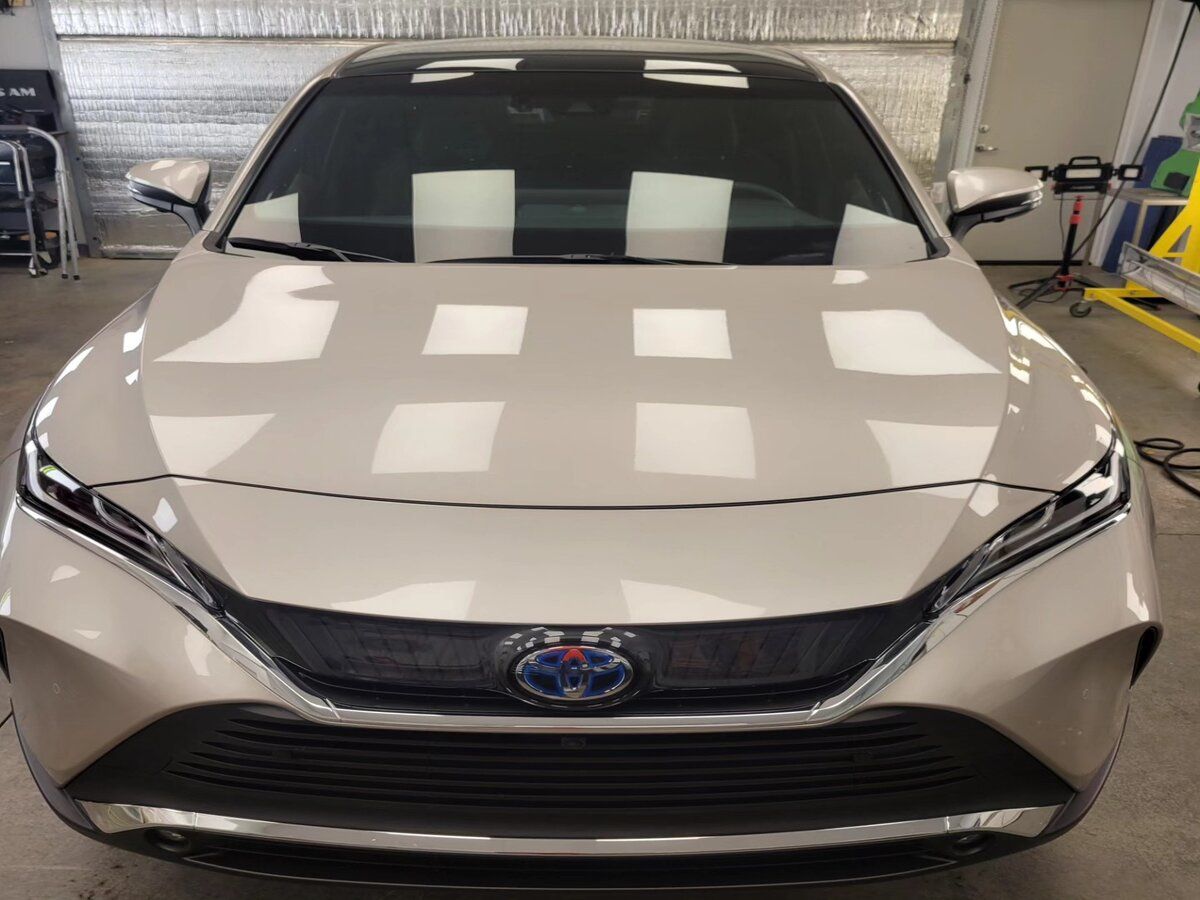
When it comes to protecting your car's paint, the decision to choose between professional installation and DIY can feel quite daunting. Professional installation offers expertise, experience, and access to high-quality products that can lead to a flawless application and long-term protection for your vehicle. Conversely, DIY installation may seem more cost-effective upfront, but it demands a steep learning curve and could result in imperfect application if not executed with precision.
Let's delve deeper into these two options. Professional installers possess the expertise and precision necessary to navigate the complexities of paint protection film application. They have extensive knowledge of the best techniques for ensuring seamless coverage, as well as the use of specialized tools for precise trimming. Furthermore, they have access to top-grade PPF brands with high-quality polymers and adhesives, crucial for longevity and resistance to fading, discoloration, and deterioration.
Consider this investment in a large project with guaranteed results. Imagine needing a complex surgery or technical repair done—you'd want an expert handling it. Likewise, entrusting your vehicle's protection to professionals ensures a level of proficiency that may be hard to achieve through self-guided experimentation.
On the other hand, taking the DIY route appeals to enthusiasts who enjoy a hands-on approach. It offers flexibility, cost-saving opportunities, and an opportunity for personal skill development. However, achieving the same level of precision as a professional installer requires meticulous attention to detail and a comprehensive understanding of the film application process. This includes proper cleaning and preparation of the vehicle's surface, as well as patience and practice in handling and applying the film.
It's like deciding between mastering a new skill or outsourcing to an expert; there are trade-offs to consider. While professional installation promises a seamless finish from start to finish, DIY installation requires a significant investment of time, effort, and resources. The decision ultimately hinges on factors such as experience, confidence in skills, time availability, budget, and desire for warranties.
Both approaches have their own sets of advantages and drawbacks. Choosing between professional installation and DIY depends on your priorities, available resources, level of expertise, and commitment to long-term maintenance. So take your time when making this decision; it's essential to align your choice with what matters most to you.
Tips for Successful DIY PPF Installation
Embarking on a DIY paint protection film (PPF) installation can be both exciting and daunting. It's important to stay focused and take it slow from the start, especially if it's your first time applying PPF. Here are some essential tips to ensure a successful DIY application:
Practice in small areas first.
Before diving into covering the larger, more exposed surfaces of your vehicle, it's wise to practice on smaller, less visible areas. This gives you the opportunity to get familiar with working with PPF and refine your technique before tackling the main sections.
For instance, don't rush to apply the film to the hood or door panels initially. Begin with smaller areas, like mirror caps or door handles, where imperfections are less noticeable.
Use high-quality film.
Investing in high-quality paint protection film is crucial for a successful DIY installation. Choose a reputable brand known for its durability, self-healing properties, and clarity to ensure optimal protection and aesthetics for your vehicle. Quality film is easier to work with and provides better protection against common hazards such as stone chips, scratches, and swirl marks.
Ensure a dust-free environment.
Creating a dust-free environment is paramount when installing PPF. Any dust particles trapped beneath the film can cause imperfections and impact the overall finish. Make sure to work in a clean, controlled space with minimal airflow to prevent debris from interfering during application. Consider using a dust removal system or air purifier to eliminate airborne particles and maintain a pristine workspace.
Follow installation guides and tutorials.
While it's natural to feel apprehensive about starting this project, there are numerous online resources available that offer detailed installation guides and tutorials. These can provide valuable insights into the best practices, techniques, and potential challenges associated with DIY PPF application. By reviewing these resources thoroughly before beginning the installation, you'll feel more confident and prepared for the process.
Taking the time to practice, using high-quality film, maintaining a controlled environment, and seeking guidance from expert tutorials are all critical components of achieving a successful DIY paint protection film application. With patience and attention to detail, you can safeguard your vehicle effectively while enjoying the satisfaction of completing the installation yourself.
At times, however, even with meticulous preparation and effort, professional expertise may be necessary to ensure an impeccable outcome in protecting your vehicle's paintwork. Let's move on to explore why enlisting a professional for PPF installation could be advantageous.
Why hire a professional for PPF installation?
When it comes to applying Paint Protection Film (PPF), the quality of the installation is crucial. Professional installers have undergone extensive training, mastering the intricacies of PPF application with precision and expertise. Trial and error cannot easily achieve that kind of skill, so make sure your investment in PPF doesn't end up being a costly mistake.
Furthermore, professional installers have access to top-tier products specifically designed for longevity and durability in protecting your vehicle's paint. They understand the best techniques for applying the film and utilize high-quality tools and materials. This ultimately leads to a seamless finish that would be challenging to achieve through a DIY approach.
One key advantage of professional PPF installation is the comprehensive warranty coverage. Reputable installers often provide warranties on both the installation process and the film itself. This ensures coverage in the event of any issues, such as bubbling, peeling, or other film-related problems. It's that added peace of mind that comes with knowing that any problems will be addressed without extra costs.
Professional installation also offers tailored solutions based on the specific needs of each vehicle. Trained technicians are capable of handling a wide range of car models, expertly covering even complex shapes and challenging areas like curved surfaces. This personalized attention to detail guarantees a flawless integration with the aesthetics of your car.
Additionally, professional installers invest significantly in proper surface preparation before applying the film. They ensure that the car's surface is immaculately clean and smooth, creating an ideal canvas for the application process. This level of diligence minimizes any chance of imperfections or adhesion issues, providing you with a superior, long-lasting result.
It's worth noting that while DIY installations may seem cost-effective initially, mistakes or low-quality film can lead to additional expenses down the line. Investing in professional installation from the beginning provides not only exceptional protection but also lasting value for your vehicle.
Given these advantages, entrusting your PPF installation to professionals offers an array of benefits, starting with unparalleled expertise and concluding with long-term protection for your vehicle's paintwork.
In conclusion, choosing professional PPF installation gives you peace of mind and protection for your vehicle's paint.
Why Choose ShineCo for Paint Protection Film Services?
You can shield your investment from the weather and keep it looking new for many years to come. ShineCo is the go-to authority on vehicle protection. With a dedication to quality, innovation, and experience, they produce outcomes that are above and beyond. With state-of-the-art technology and high-quality materials, our Professional Paint Protection Film Services can produce a shield that is strong enough to resist regular driving abuse. Our paint protection film protects your car from gravel, insects, road debris, and other threats when you drive along the highway or through city streets, keeping it looking brand new. Book now!
